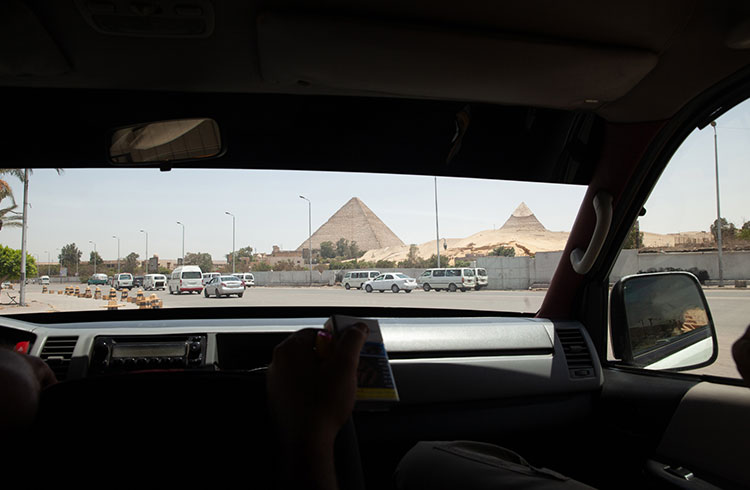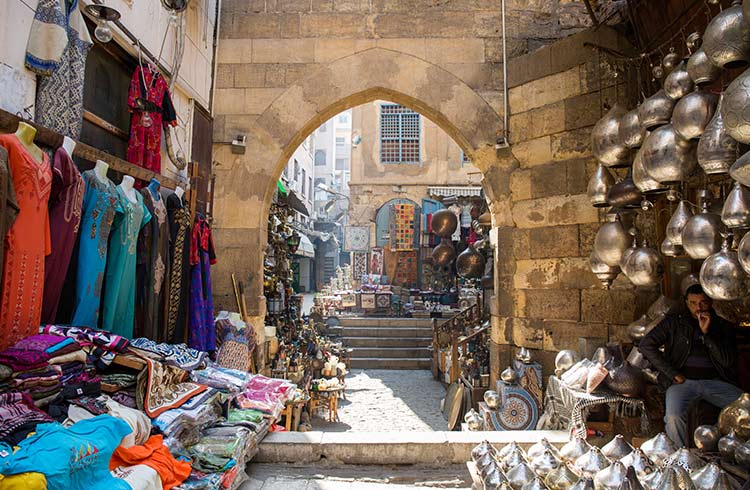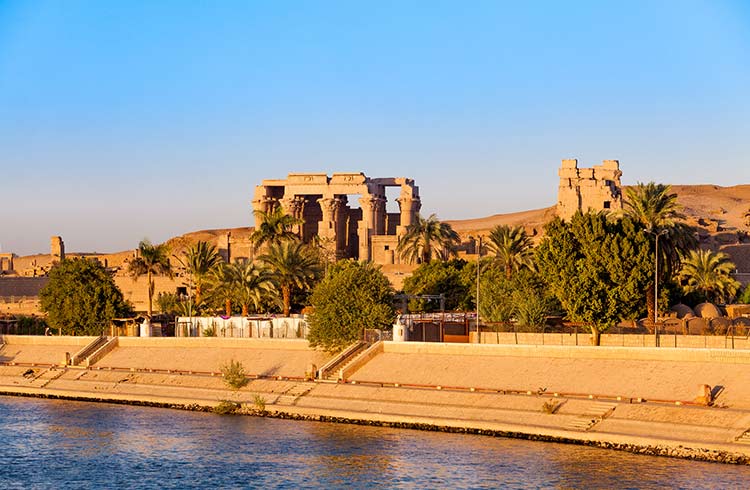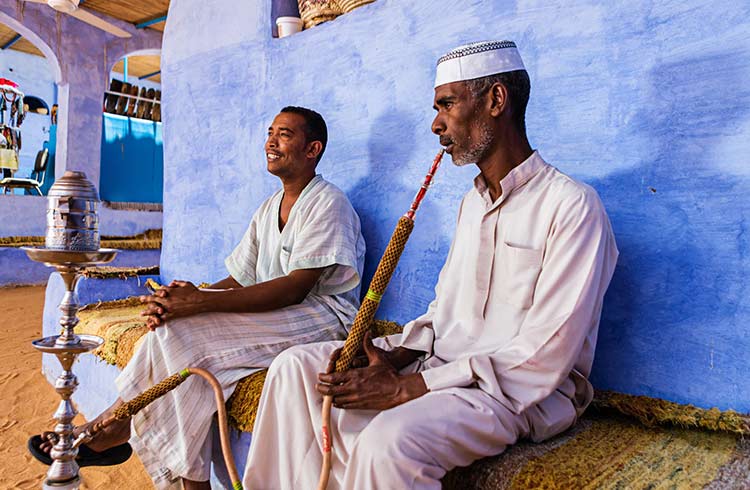The Stones Too Are Really Looking Forward to the Trip With You All and Being in Montana Again
Nomad Rachel shares her travel tips for the best ways to see the sites, the places most worth visiting, the truth about Nile cruises and the Giza pyramids, and other important things to know before you go.
![Leaving on a jet plane. Courtesy of Flickr.com, by [Mrs Logic].](https://media.worldnomads.com/Explore/north-africa/temple-of-karnak-luxor-egypt-gettyimages-nick-brundle-photography.jpg) Photo © Getty Images/Nick Brundle Photography
Photo © Getty Images/Nick Brundle Photography Visitors to Egypt are drawn to witness the logic-defying feats of engineering that are the Pyramids of Giza, to see colossal temples and tombs that offer up the secrets of the Pharaohs (Egypt's kings and queens) and the gods they worshipped.
To visit the ancient wonders of Egypt is to follow a path carved out through millennia by the Greeks, Romans, Medieval pilgrims, Egyptologists and, now, travelers. But beyond the astonishing antiquities, it's a magical country that swirls with myth, legend and mysticism.
Here's what I discovered, and what you should know before you visit Egypt:
1. The Pyramids of Giza are anti-climactic
The iconic image of the pyramids, with its backdrop of endless desert, is a clever trick, as we discover after navigating the congested highways of Cairo, a city of 22 million people. The Giza Pyramids complex lies on the west bank of the Nile, on the city's outskirts, barely a stone's throw from the crammed high-rises and bustling bazaars of the sprawling metropolis.
Still, nothing can detract from the majesty of Giza, one of the Seven Wonders of the Ancient World. The UNESCO Heritage-listed site is home to six pyramids; magnificent burial tombs built for the kings of the 4th dynasty around 4,500 years ago. This includes The Great Pyramid, built for King Khufu, and its cloud-grazing 480ft (146m) apex. Keeping loyal guard is the Sphinx – a mythical hybrid of human and lion.
In the shadow of the pyramids, camel owners seek shade for their animals on breaks, in between offering 15-minute rides at a cost of around US $30.Even having your photograph taken with one can cost around US $10. Though the majority of the camels look healthy and well-cared for, it's an activity that does not sit well with every traveler.
We each pay US $11 to join the queue to go inside Khufu's Pyramid. A fairly steep (and slightly scary) descent on a narrow wooden walkway takes us to the inner chamber. I'm expecting to be blinded by a dazzling haul of treasures, but the tiny room is airless and threadbare, stripped of its treasures thousands of years ago by opportunistic robbers. Thankfully, I don't suffer from claustrophobia, but the experience is a little anti-climactic.

2. I needed more time at the Egyptian Museum of Antiquities in Cairo
Due to open towards the end of 2022, hopes are high that the new, $1 billion Grand Egyptian Museum will put Cairo firmly back on the tourist map, following a difficult few years in the wake of the 2011 revolution and several terrorist attacks. The impressive modernist glass construction – which will feature an earth-to-heaven viewing platform of the pyramids, is being heralded as the largest archaeological museum in the world.
I visit the current museum, the Egyptian Museum of Antiquities, an oasis of calm in the heart of the frenetic capital city. The red-hued building has a faded colonial charm and houses an incredible 120,000 artefacts. For an entrance price of US $12, many of the rare treasures we'd expected to see inside the pyramids are on display here. This extends to the pharaohs themselves; many discovered in The Valley of The Kings, the world-renowned royal burial ground on the Nile's west bank.
A US $6 ticket allows you entrance into the Royal Mummy Room. However, it may not be for everyone; gazing upon the preserved kings and queens makes for a unique, if unsettling experience. The "star" of the exhibition is Ramses I. His mummified remains are almost perfectly intact, and we fall into an awed silence when it dawns on us that we're looking at the (reddish) hair and teeth of a man who walked the earth over 3,000 years ago.
The somber atmosphere lifts when we move on to the other main draw of the museum, the King Tutankhamun collection. He is the most well-known Egyptian pharaoh, despite only ruling for a short while. The "boy king" was only nine years old when he became ruler.
In 1922, British archaeologist Howard Carter unearthed an outstanding collection of treasures in Tutankhamun's tomb in The Valley of The Kings, which revealed the Egyptian's belief in the afterlife. These include King Tut's solid gold bed, his intricately carved throne and chariot, plus hundreds of other everyday items, all buried to make the Pharaoh's next life as comfortable as possible.
We only have a couple of hours at the museum, not enough time to truly appreciate the incredible haul of artefacts. However, the current space doesn't do the priceless exhibits much justice and the new museum, which will cover a space of over 50 hectares, should solve that problem. If I needed an excuse to return, this is it.

3. A Nile cruise from Luxor to Aswan made me fall in love with boat travel
I've never really "got" cruising. Why would you want to be stuck on a ship for hours on end, wasting precious time to explore on land? However, when I jump onboard the Medea, my home for three days as I travel from Luxor to Aswan, that changes instantly.
It turns out to be the perfect way to explore the Nile and the treasures that line its west bank. I've lucked out with my accommodation: a cabin at the ship's bow that offers 360º views.
Ploughing gently through the biblical waters, we see rural villages little changed by time. Oxen bask lazily in the midday heat and children play on the river banks, stopping to wave and squeal excitedly at the passing boats.
Cruising also offers a great way to hop off to visit the temples, including Kom Ombo, the only one dedicated to two gods: the crocodile-headed Sobek and falcon-headed Horus the Elder. Many still have intact hieroglyphics adorning their walls, providing a fascinating insight into Egyptian culture.

I'm getting used to extremely early starts on our tour. It's not unusual to have 5am alarm calls, as the mercury can nudge 89ºF (32ºC) by midday (even in October when I'm there), so getting up early is a practicality of traveling here.
When night descends, I hear haunting calls to prayer from the mosque's minaret towers on both sides of the river. It's a sublime experience.
4. "Authentic" experiences may come with a price
Just as the ancient Egyptians relied on the waters of the Nile to sustain all life, the tourism industry is essential for survival today. After a difficult few years, around 8.3 million visitors were recorded in 2017 — nearly double those in 2015 – and officials are optimistic the upward swing will continue.
Everywhere I go, I see hawkers selling every souvenir under the sun. Our guide advises us it's common practice to cut the original asking price by half and start from there. As a dedicated shopper, his advice helps me gather an impressive stash of souvenirs, but the friendly bartering is definitely the best part of the experience. Always check to make sure the souvenirs you purchase are ethically made and authentic, and be especially wary about anything made from camel bone.
However, I've learnt on my travels that sellers around the world can spot a soft target at 10 paces. My theory is proved when we visit an alabaster museum in Luxor. It starts innocently enough: I smile at the family sitting on the bench outside; a father smoking an elaborate hookah (a traditional pipe) with his four children. When they wave back and motion me to come over, I have hopes of getting a great photograph.
Before I know it, I've been invited to sit down and enjoy some shisha (flavored tobacco). The children giggle at the British woman with bright copper hair who is temporarily hanging out with the family. But of course, I'm expected to pay for the privilege. Personally, I think it's more than a fair exchange and am happy to offer US $10 to have my tour buddy capture the moment on my iPhone, though it serves to highlight there's an expectation that you'll pay for these "authentic" interludes.

5. The Sound and Light Show at the Pyramids is not worth the money
To mark our last evening in Egypt, we head back to the Pyramids for The Sound and Light Show. As night falls every evening, the 45-minute show follows a timetable of different languages to suit all visitors. Admission is around US $20 – don't spend US $23 on the front-row seats because you get the same views for the cheaper ticket.
Our expectations for a thrilling laser extravaganza are quickly dashed. The 'light' part of the show consists of the Pyramids being illuminated in a rainbow of colors and a 'face' being cast onto the Sphinx. A booming voice, reminiscent of an epic British biblical 1950s movie (think Charlton Heston in Ben Hur), crackles over the speakers to take the audience through the history of the pharaohs.

While there's no denying the production has a certain old-school charm, it's in need of a serious upgrade to make it a true attraction. My advice? Get your history fix online and spend your time in the famous Khan El Khalilibazaar instead. This vast open-air market is a true slice of modern-day Cairo life, and a far more colorful experience to round off your time in Egypt.
What do you wish you knew before traveling to Egypt?
Related articles
Source: https://www.worldnomads.com/explore/north-africa/egypt/things-to-do-and-see-in-egypt
0 Response to "The Stones Too Are Really Looking Forward to the Trip With You All and Being in Montana Again"
Post a Comment